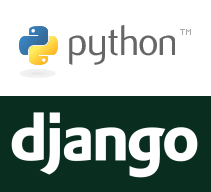Yum Install Ant Without Openjdk 7. 7/30/2017 0 Comments Install an RPM Package on Ubuntu Linux. Installing software on Ubuntu usually entails using Synaptic or by using an apt- get command from the terminal. Install is the easy part, but can anyone note the reason why you can no longer perform a “yum update jdk” with version 1.8. In this tutorial we will show you how to install Jenkins on CentOS 7. In this tutorial we will show you how to install Jenkins on CentOS 7. Git, Mercurial, Perforce, Clearcase and RTC, and can execute Apache Ant and Apache Maven based projects as well as arbitrary shell scripts and Windows batch commands. This article assumes you have at.
Jenkins is free and open source continues integration tool and it’s code is written in Java. It provides the feature of continues build and deployment or in other words we can say it is a automation server. Jenkins are used where continues build and integration is going on for software development. In this post i will discuss how to install and configure Jenkins on CentOS 7 and RHEL 7.
Thriving ivory torrent discography beatles. Step:1 Add Jenkins Repository Jenkins package is not available in the default CentOS and RHEL repositories. So we need to add jenkins repository using the beneath commands. [ ~]# wget -O /etc/yum.repos.d/jenkins.repo [ ~]# rpm --import Step:2 Install Jenkins and Java Run the below yum command to install Jenkins and java.
[ ~]# yum install jenkins java-1.8.0-openjdk –y Step:3 Start and Enable Jenkins Service Run the following systemctl commands to start and enable the jenkins service [ ~]# systemctl start jenkins [ ~]# systemctl enable jenkins Step:4 Open the ports (80 and 8080) in OS firewall. In case firewall is enabled on your Linux server then run the following commands to open jenkins related ports like 80 and 8080. [ ~]# firewall-cmd --zone=public --add-port=8080/tcp --permanent success [ ~]# firewall-cmd --zone=public --add-service=http --permanent success [ ~]# firewall-cmd --reload success [ ~]# Step:5 Access the Jenkins Web portal Access the URL: Admin password is created and stored in the log file “ /var/log/jenkins/jenkins.log“. Run the below command to get the password. [ ~]# grep -A 5 password /var/log/jenkins/jenkins.log Copy the password and paste it in above windows and click on Continue. In the next windows Select the option: Install suggested plugins As we can see required plugin installation is in progress for Jenkins.

Once it is done with plugin installation. It will ask to create Admin User Click on Save and Finish click on “ Start using Jenkins” Now Configure GitHub project using git plugin in Jenkins. Let’s Assume I have a ‘ cloudtechi’ project on GitHub and wants to integrate this project in Jenkins using git plugin. Beach boys holland zip code. Let’s first install git package on your machine on which you have installed Jenkins because Jenkins use git command to pull the GitHub project code. [ ~]# yum install git Login to the GitHub and get the Web URL of your project. Login to the Jenkins portal, Click on “ New Item” Select the Freestyle Project and Specify the name as per your setup, In my case I putting as “ techi_project” Click on OK Specify the Project Description and Select Git option in Source Code Management Tab and specify the Web URL of your GitHub Project and its credentials.